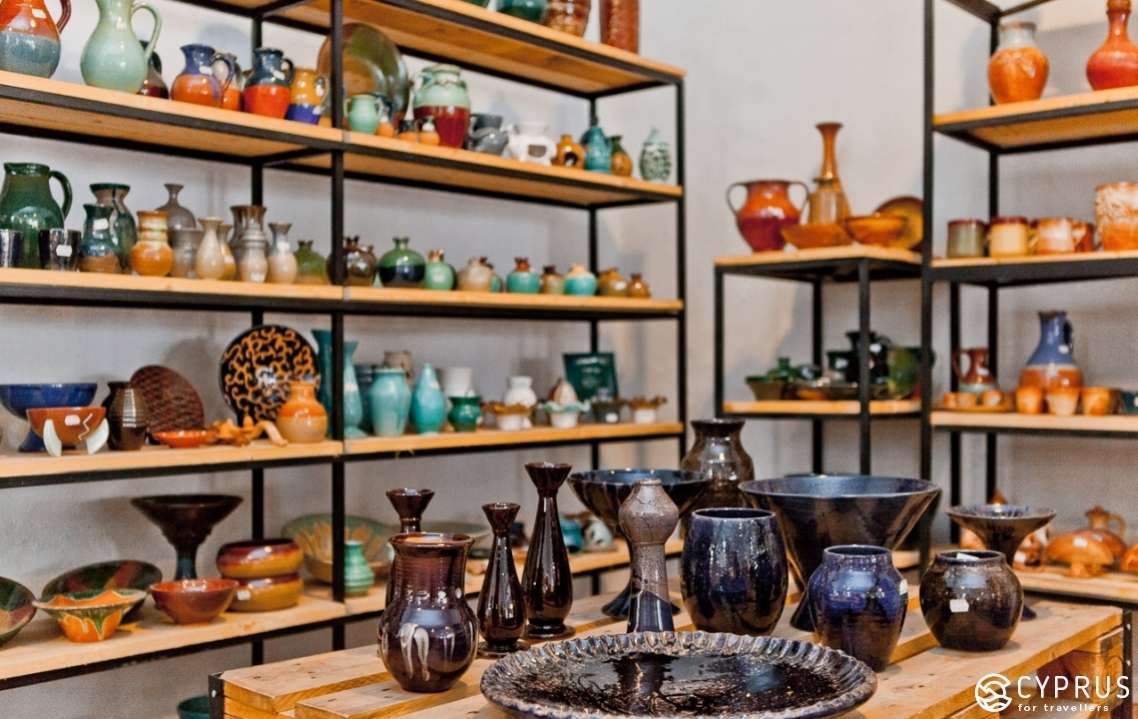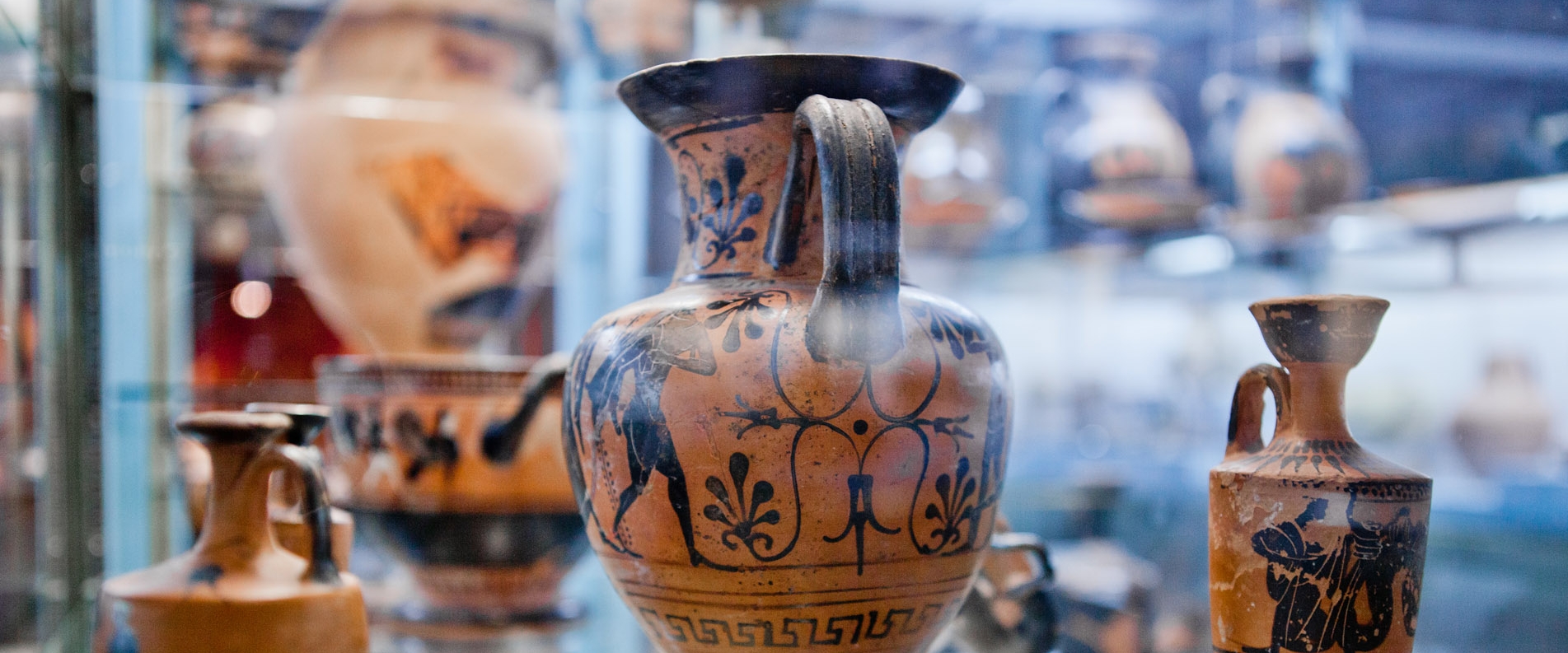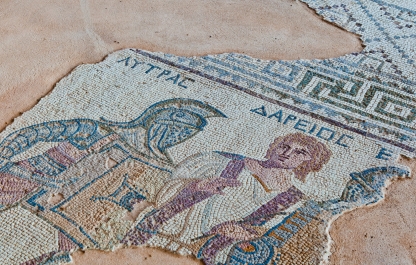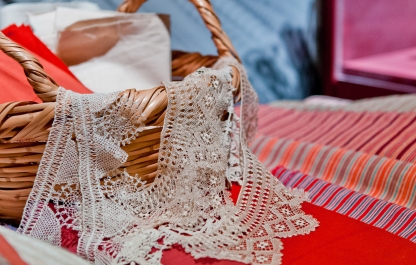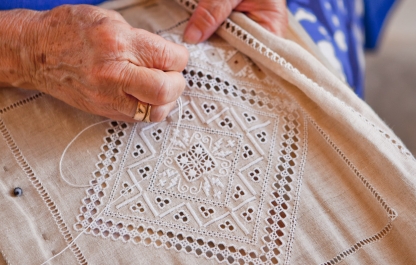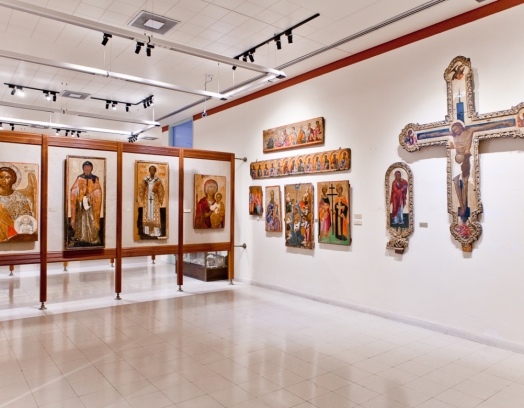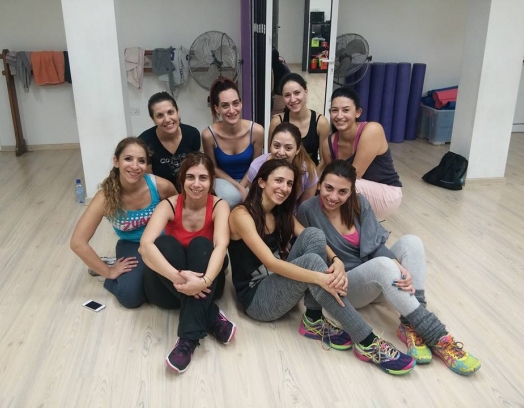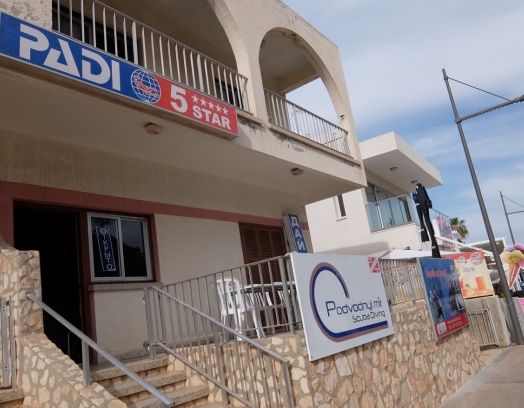Ceramics is an ancient craft that has become one of the most impressive areas of Cypriot arts and crafts thanks to the ease of working with the materials and its widespread use in daily life. It was first documented in Cyprus in the 9th-8th centuries BC. (See «The Cyprus Museum»). Products made of clay by Cypriot artists found fame in Europe in the 14th century, namely «pitharia» (giant earthenware vessels, long been used to store and transport wine, vinegar, oil or water). Some forms of pottery (pots, vases and jugs) and their production methods are still used today and continue to enjoy great popularity.
If you go to Cyprus and decide to bring home a special souvenir that’s also useful and practical, local ceramic products are an excellent choice.
Pottery in Cyprus dates back to the Neolithic period. Archaeologists’ findings, in particular ceramic artefacts, confirm that people were using clay items in their everyday life at that time and even decorated their homes with them. It’s especially interesting to note that the artists of that time already knew how to make a glaze and had developed polishing techniques. Ceramics were often decorated with a range of paintings and ceramic masks were used in the rituals of pagan cults. It is thought that most impressive forms and decorative patterns were invented as early as the Early and Middle Neolithic period. The same period gave us numerous early terracotta statuettes, mostly of the female form. Clay figurines were important in holy sanctuaries: the sculptures and figures from the Ayia Irini sanctuary (750-600 BC) are especially famous.
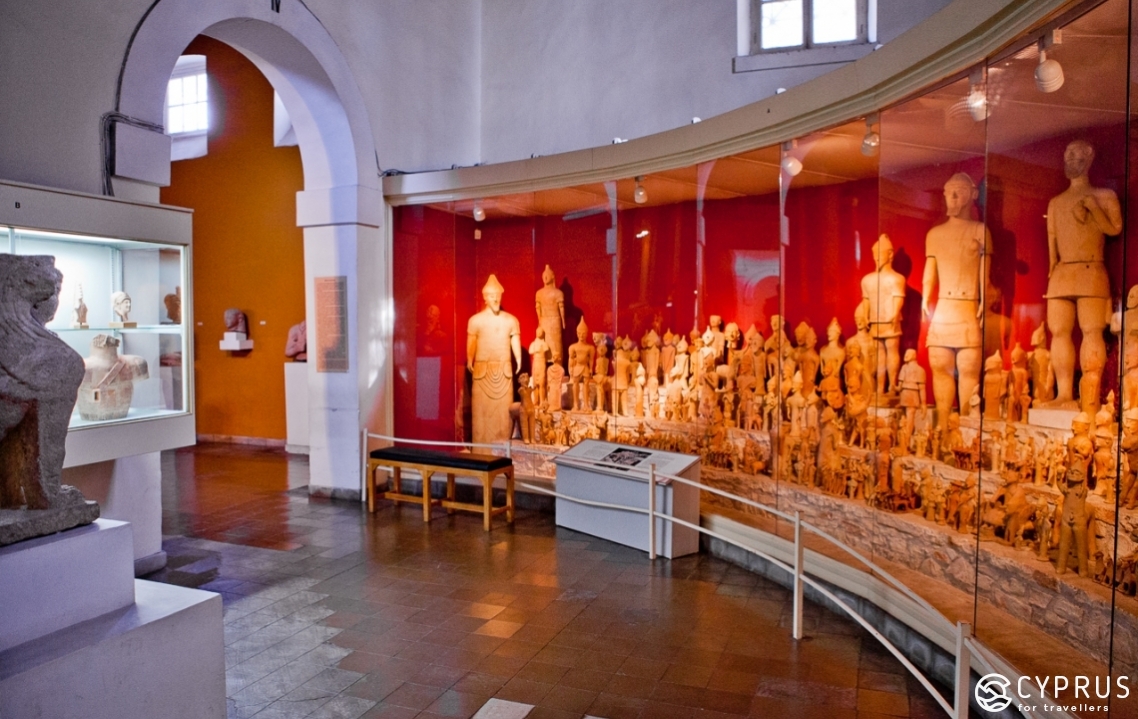
Throughout the centuries and epochs, Cypriot ceramics has demonstrated its many links with Mediterranean cultures and those further afield. The accepted theory by Historians states that Cyprus’ unique culture began to take shape as early as the late 9th century BC when the first permanent settlers from South Anatolia and the Syrian-Palestinian (Levantine) coast arrived on the island bringing their well-developed culture with them. However, there is evidence that further back in ancient times, hunters came to Cyprus in search of its dwarf elephants and hippos. Soon thereafter, there were early Neolithic settlers whose community was based on agriculture and animal husbandry. During the Late Neolithic period, which lasted until 3900 BC, the island settlers began working with clay, making vessels that were then fired and decorated with simple patterns.
Their settlements were found all over the island, and include the famous Choirokoitia and Kalavasos sites near the southern coast of the island (read more about in our review).
The culture of the following Eneolithic period (spanning approximately 3900-2,500 BC) is likely to have come about thanks to the new wave of immigrants. Their art and religious practices were already more developed. This period saw characteristic ceramic and stone female figures predominate. They often had an exaggerated sexual nature symbolising fertility in both humans, animals, and agricultural land — a reflection of the basic needs of this agrarian community. In the second half of the Eneolithic period, the people of Cyprus learned to produce small tools and ornaments from the indigenous copper (which in Greek is Khalkos). This marked the transition from the Stone Age to the Bronze Age.
Cyprus’ has a unique geographical location: at the point where many of the sea routes in the eastern Mediterranean meet. This both enriched its culture led to the influx of a number of influences, meaning the island became a key centre of commerce in the ancient times. As early as the early (2500-1900 BC) and mid-Bronze Age (1900-1600 BC), the island had forged links with Minoan Crete (2700-1400 BC), Mycenaean (or Achaean) Greece (16-11th centuries BC), and the ancient civilizations in the Middle East (Syria and Palestine), Egypt and South Anatolia (parts of Asia Minor).
Middle Eastern texts from early 2000 BC make reference to the kingdom of Alasiya whose name is synonymous with either the whole of Cyprus or parts of it, and mention the island’s links with the Syrian-Palestinian coast. Correspondence between the pharaoh of Egypt and the king of Alasiya dating back to the first half of 14th century BC provides historians with valuable information on this topic. Thanks to the Hittite texts, modern historians learned that Alasiya was captured at the end of the 13th century BC by the peoples from those regions and then went on to pay them tribute: mostly gold and copper.
Cyprus’s rich copper resources were highly valued throughout the ancient world but it also exported jugs and other ceramicware in exchange for luxury goods: jewellery made from precious metals, products made from ivory, chariots and horses, valuable furniture, etc.
The ceramics of prehistoric Cyprus is diverse in its form and decoration, particularly that from the early and mid-Bronze Age. For example, terracotta figurines, which were made in rather large quantities, were placed in the tombs of noble women throughout the bronze age. They often depicted female figures symbolising rebirth.
The Late Bronze Age (1600-1050 BC) saw copper mined and exported on a large scale which increased Cyprus’ trade with Egypt, the Middle East and the Aegean region.
Kilns found in various areas indicate that pottery flourished there for centuries. Further proof is provided by the large numbers of vessels found dateing back to the Eneolithic period (3000-2500 BC), the Bronze Age (2300-1050 BC) and the Geometric period (1050-950 BC).
It is particularly interesting that there is a legend stating the art of making vessels from clay was invented in Lapithos by Kiniras, the ancient king of Paphos and founder of the cult of Aphrodite.
What about the local artists and craftspeople? Local craft workers were inspired by the world around them, the nature of Cyprus, and influenced by the prevailing worldview of their particular time and drew on all this to produce the variety of forms, motifs, patterns found in their work. They created their art and built up experience, which would go on to form the unique, recognisable character of the local art and crafts of the area, including pottery. All this is part of Cyprus’ rich cultural and artistic heritage.
Each epoch had its own production site on the island, each with different characteristics.
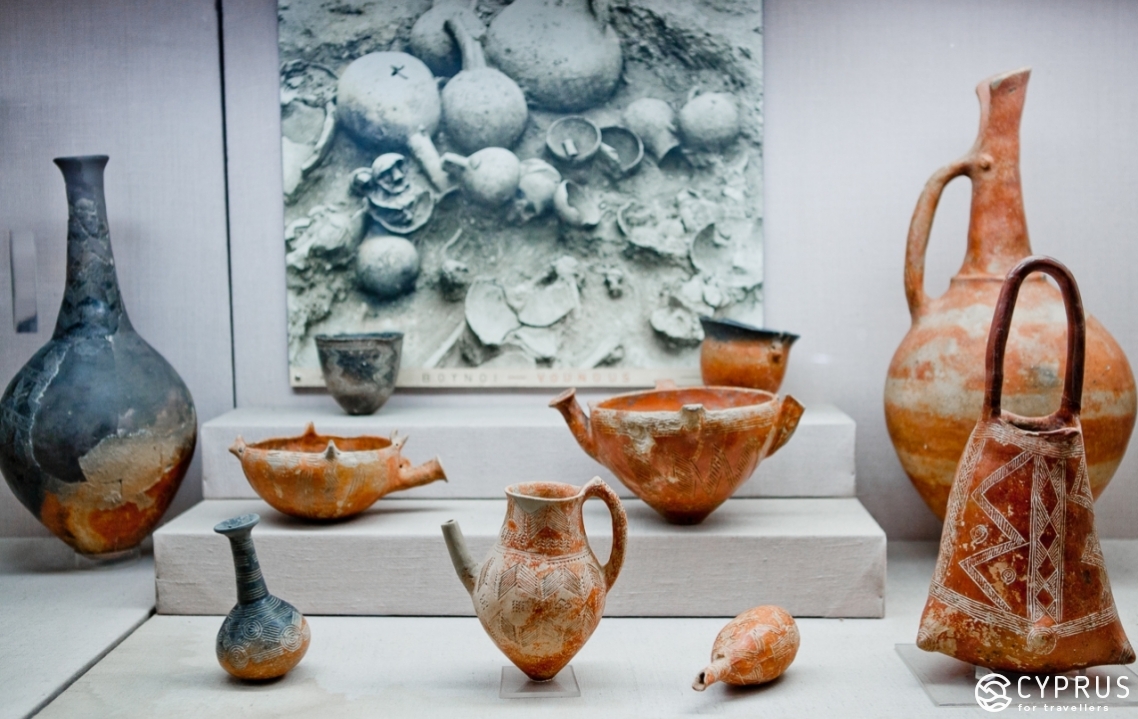
Kyrenia was historically known for its ceramics and was famous for its highly skilful production methods. Famagusta (Varosha) had the best ceramics artists on the island.
Workshops in the Kyrenia area mainly produced glazed pottery and kitchen utensils for daily use alongside high-quality decorative items. Production took place in small workshops and usually involved the whole family. Most of the ceramics they created were hand-decorated, glazed and fired at low temperatures (920-980C). They also produced exquisite terracotta vases and jugs in varying shapes and sizes.
Varosha was one of Famagusta's most famous and flourishing districts until 1974 and was known for its ceramic water vessels. The local pottery, called varoshotikis, was also produced to be exported to nearby countries. The main material used was a smooth yellowish clay (with a high content of iron and potassium). In Varosha, pottery was mostly made by men who had worked in this industry in entire dynasties. Ceramics from this area often have anthropomorphic decor, with raised decorations made from applied clay in the shape of snakes and animals.
What’s more, the origin of the techniques of this decorative style is analogous to those used in ancient times. The traditional and still popular anthropomorphic shapes of vases (made in the shape of female figure) with raised decoration is called Koukoumara.
These days, the pottery tradition continues to prevail in the villages of Kornos (Larnaca region) and Fini (Limassol region) and the industry there is an entirely female operation.
Kornos and Fini — both villages are also well-known for their ceramic products made from red clay (with iron oxide and silicon dioxide) and deservedly so.
Kornos
This area is known for its traditional ceramics and pottery. It was once the villagers’ main occupation and is still widely practiced today. The high quality of the local products has long been recognised worldwide. For example, products from Kornos often earn awards and top prizes at the annual All-Greek Ceramics Exhibition. The ), raw materials for clay utensils (made in the workshop of the Kornos' Cooperative Company of Potters) come mainly from the foot of Mount Stavrovouni and from the region of Mount Xylia. The workshops produce large wine jugs as well as milk vessels, flower pots, incense burners and «tziverti» (cylindrical clay hives that have been used in beekeeping since ancient times). Nowadays, you can order clay garden stoves and other decorative elements. The ceramics are often decorated with various engraved and or raised images.
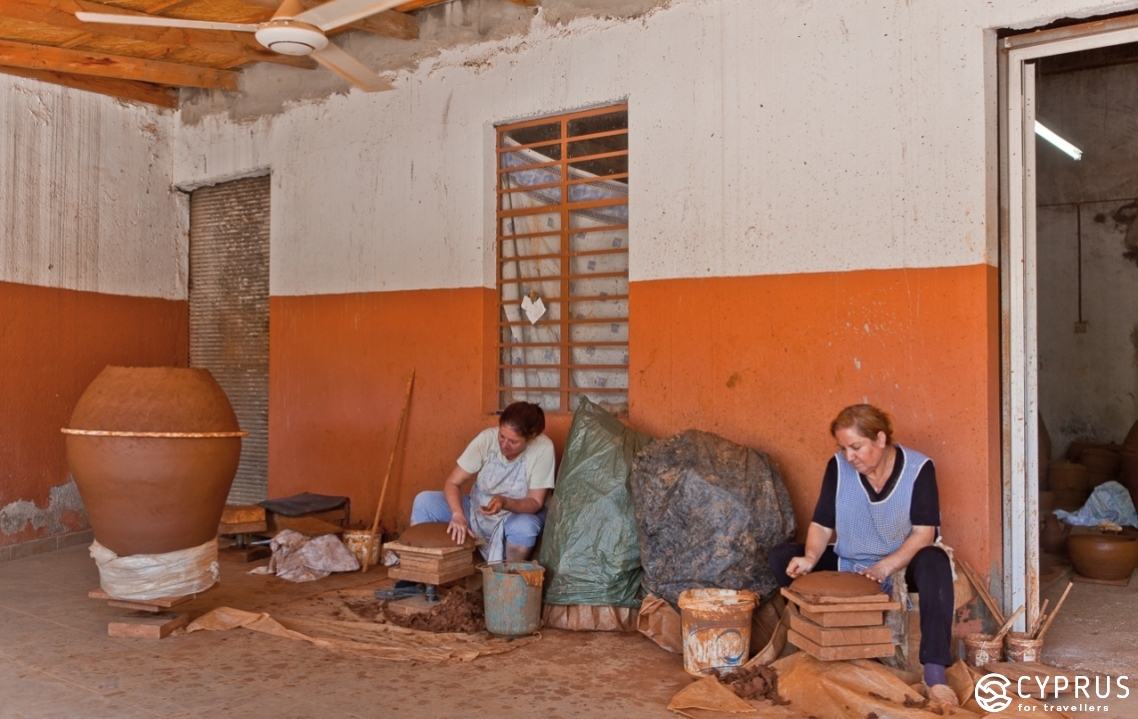
The master craftswomen work both in workshop cooperatives and at home on small pottery wheels (30 cm high), manually turning it and creating their own ceramics. As she works, she gently uses a wooden knife to even out and smooth the surfaces of the pot from the bottom upwards, giving the pot a clear outline, removing surplus clay, and forming its top rim. When the main body of the vessel is ready, the potter takes more clay and carefully kneads it in her hands, rolling it into «sausages»: they are added to the upper rim from the inside, thus creating a beautiful, convex rim at the neck.
Fini
Fini is south of the Troodos mountain range, 3 km from the Trooditissa Monastery, and 6 km from the Platres ski resort. The village has a unique pottery tradition stretching back centuries. The composition of the soil in the region meant that a lot of the local residents produced pottery as a side profession to make a bit more money for their families.
It has been one of the four most important pottery villages in Cyprus for centuries. The pots produced here are made of red clay and the main body of the pottery is fairly porous (similar to that produced in Kornos). However, the small locally produced items are characterised by their pronounced and abundant sculptural decoration with floral and anthropomorphic motifs.
The main type of pottery, historically typical for Fini, is a large, hand-made wine jug. They were made over the course of 15 days in the place they would be needed and used. It was always a male occupation and can be traced back to the early Bronze Age (2300-2000 BC).
As we said above, pottery was a profitable occupation for a lot of residents. Men, as a rule, produced flagons and giant jugs, while women made smaller pots for storing and transporting agricultural produce and water. Pots are hand-made in Fini to the same methods as thousands of years ago without any major changes. You can see ceramicware from this village dating back to the 5th century BC in the British Museum, for example.
These days, pottery is an entirely female occupation. The most interesting ceramicware is to be found in Kornos and Fini: they boast images of human figures, animals, birds, snakes and floral designs.
Lapithos
You can read more about the ceramics and traditional production methods in this village in Dr. Eleni Papademetriou’s book, Modern Glazed Pottery of Cyprus, Lapithos Ware (En Tipis Publication 2005).
It has a different character to the pottery described above. Here, the traditional methods practiced in the late Middle Ages continued up until the invasion by Turkish troops in 1974. These methods produced unique glazed ceramicware.
During the period of the Byzantine Empire, glazed vessels were widely distributed in Cyprus, especially those with engraved decor. Local ceramicware had a diverse and unique design usually achieved using green paint. Another painting method involved immersing part of the pot in a light creamy solution made from pure white clay.
A lot of the medieval furnaces dating back to the 16th century, which can still be found in modern-day Lapithos (the village is still in occupied territory), are further proof that this area was an important pottery site back in ancient times (for about 500 years).
There is surviving evidence from contemporary sources. For example, in 1769 Italian priest Giovanni Mariti described Lapithos as the centre of traditional ceramics. In 1862, Albert Gaudry, a French paleontologist and geologist, made reference to the glazed ceramics from this region; and in 1893 a traveller named Mrs. Lewis visited the pottery workshops of Lapithos and described her journey as follows: «... I descended into the village through the endless narrow and crowded streets until I reached the kiln, which had probably stood there since time immemorial... [it is still in working order — E. KT.] there were pots and vases, still crudely made in the forms used since ancient times...».
Some famous pottery masters from Lapithos, well known in Cyprus: Dimitris Tsimouris, Costas Christodoulakis, Aristophanes Hadjicharalambous, and others.
After the Turkish invasion in July 1974, all the Greek pottery masters from Lapithos, Kyrenia and Varosha became refugees and were forced to move to the free areas of the island where some of them were able to rebuild their businesses and establish new workshops. Now the «legacy of Lapithos» is practiced all over the island: modern potters use its polishing techniques, glaze and green dye to make bowls, plates, vases, water and other household vessels.
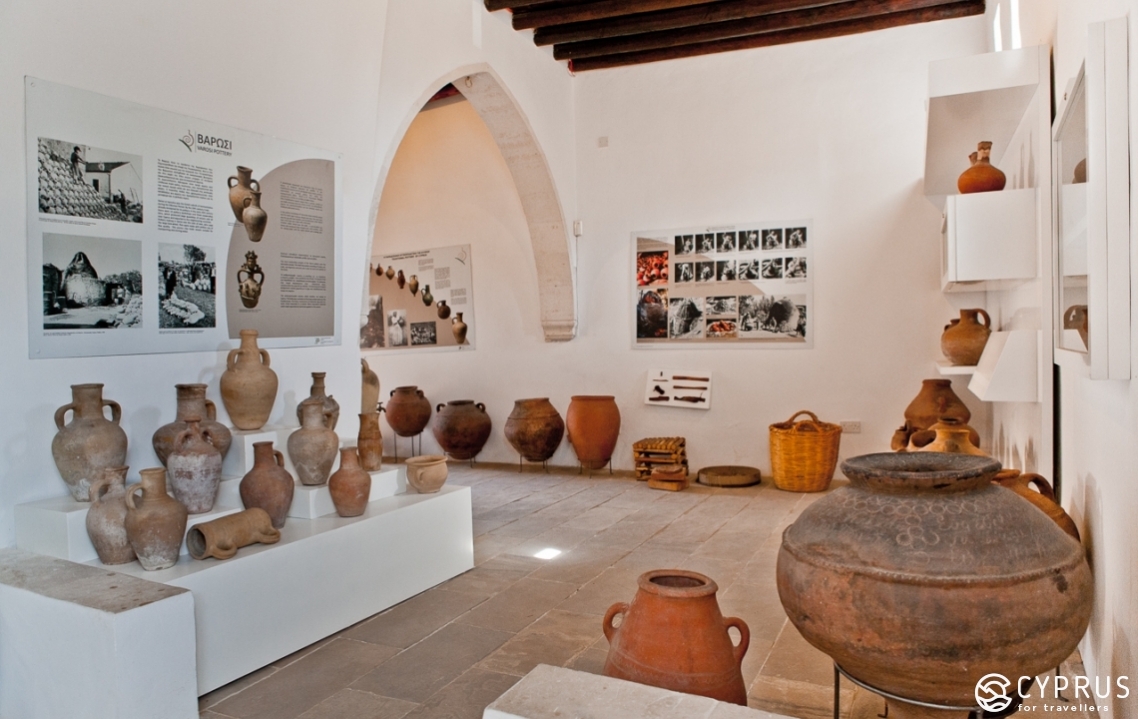
Back then, a lot of young people travelled abroad to study ceramic art and pottery. When they returned to Cyprus, they opened their own workshops and brought fresh, new ideas and foreign techniques with then thus developing the craft’s new feel from an artistic and practical point of view.
All pottery and ceramicware in Cyprus are hand-made by individual artists. The high quality of the final products is guaranteed by firing the ceramic clay in a gas kiln at high temperatures. The unique works with their characteristic textured surfaces are created in this way and have what is called an uneven glaze. You can find and buy original works such as mugs, jugs and vases, storage vessels, plates and many other exceedingly beautiful and practical products in workshops and souvenir shops. There are also decorative items for your home: vases, large bowls, etc.
Let’s look a little closer at the production process of Cypriot ceramics: the raw materials and their preparation, tools and manually driven pottery wheels, batanas white finishing, which smooths the surface, the secret of the production of glaze and decoration methods.
Pottery Production Techniques
Preparing the raw materials
Mining, extracting and transporting clay was exclusively a male occupation. These workers were called «khomatarides» (from khoma meaning soil, earth). Two types of raw material are used to prepare ceramic clay — white and red — depending on the composition of the soils in the areas near the villages producing pottery. After it has been mined, the clay should be properly dried: it is spread out and pound with a solid wooden stick (called a koupani) to break up the lumps. The clay is then sifted to remove rocks and other unwanted elements. This all takes place in a special trough where the prepared clay is sprayed with water and then thoroughly mixed with a special wooden shovel and transferred to the working area.
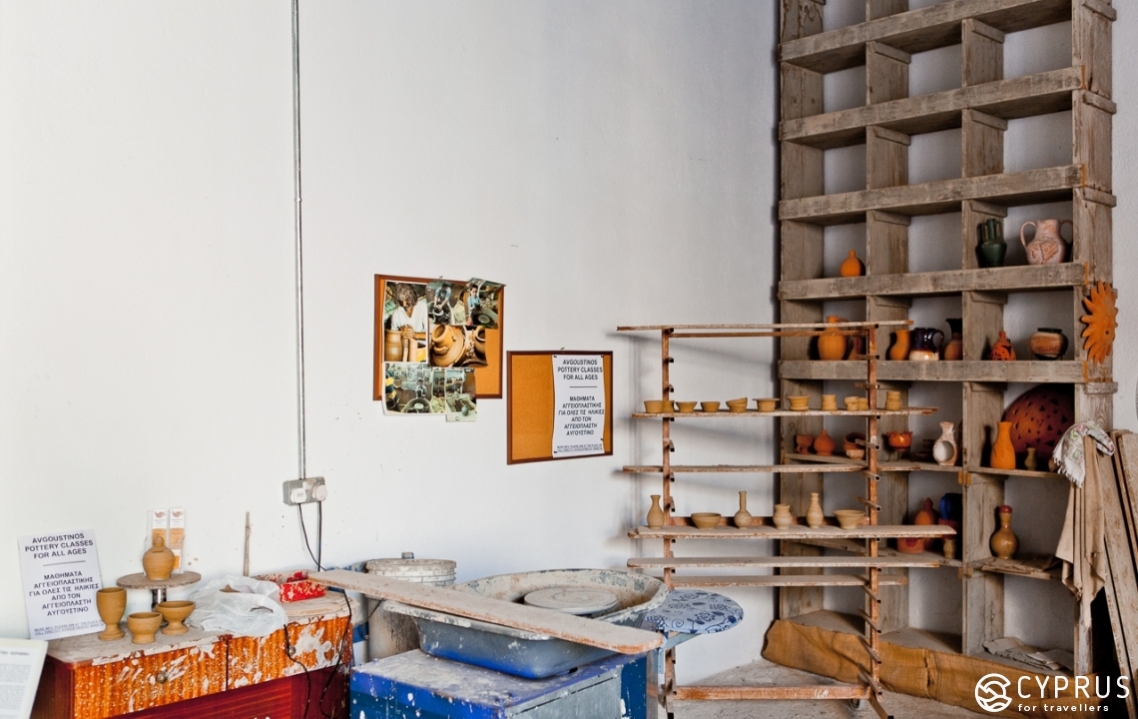
Making pots
Forming (molding) pots and other pottery takes place on the traditional «giristari», i.e. potter's wheel.
The potter sits in front of the wheel and throws a small amount of clay on it (depending on the size of the item being made, for this project a piece of clay weighing, on average, from 1 to 3 kg was used.) It is then put in the centre, and the clay «ball» is moistened in her hands. While being worked, the clay is raised up at the sides and then lowered. The potter slightly presses down from the top with palms together in order to squeeze it down better and get rid of any air bubbles in the material.
Then, the potter finds the centre of the clay lump and starts to carefully apply pressure with her fingers. As the clay rotates, this forms the basic shape of the future pot. The master will then put her left hand inside the main body and then use both hands to gently form the sides of the pot with her right hand outside providing support. She places her left hand inside and forms the pot’s sides and the bottom. Gradually, she moves her hands higher and the pot grows as she raises the clay with them. The clay should be wet at all times so from time to time potters wet their pots with a small, damp cloth so the clay can be smoothly manipulated.
The potter can then use a special tool with a straight edge to ensure the upper rim is even. When the potter works on important details, she will slow the potter's wheel down.
An interesting fact: before pots were made on a potter's wheel in Cyprus, potters would usually lay pine bark to form a surface and add three small pieces of clay, which would then be formed into the pot. The bark made it easier to carry the pot shortly after it has been made and is still soft.
After the pot is finished, the potter wipes the sides with a damp cloth and polishes it with straw. The pot can now be dried in the shade, shielded from draughts, until the next day. Then, the excess clay is cut off from the base of the pot with a wooden knife, thus levelling it out.
Further work depend on the type of pot: it might have handles added and be decorated with a specific pattern such as chamomile, cones, birds or small human figures, etc. It is again put in the shade to dry. When the pot is completely dry, it is ready for firing in the kiln.
Large (even giant) pots were made where they would go on to be used. The work involved men called Pitarades (from the word Pitari – jug). The raw materials needed were mined near the village. When customers from other villages needed a large jug on their farm, they would buy and bring the necessary clay to their homes themselves. During the spring and summer months, potters went to buyers’ villages to make jugs and pots then.
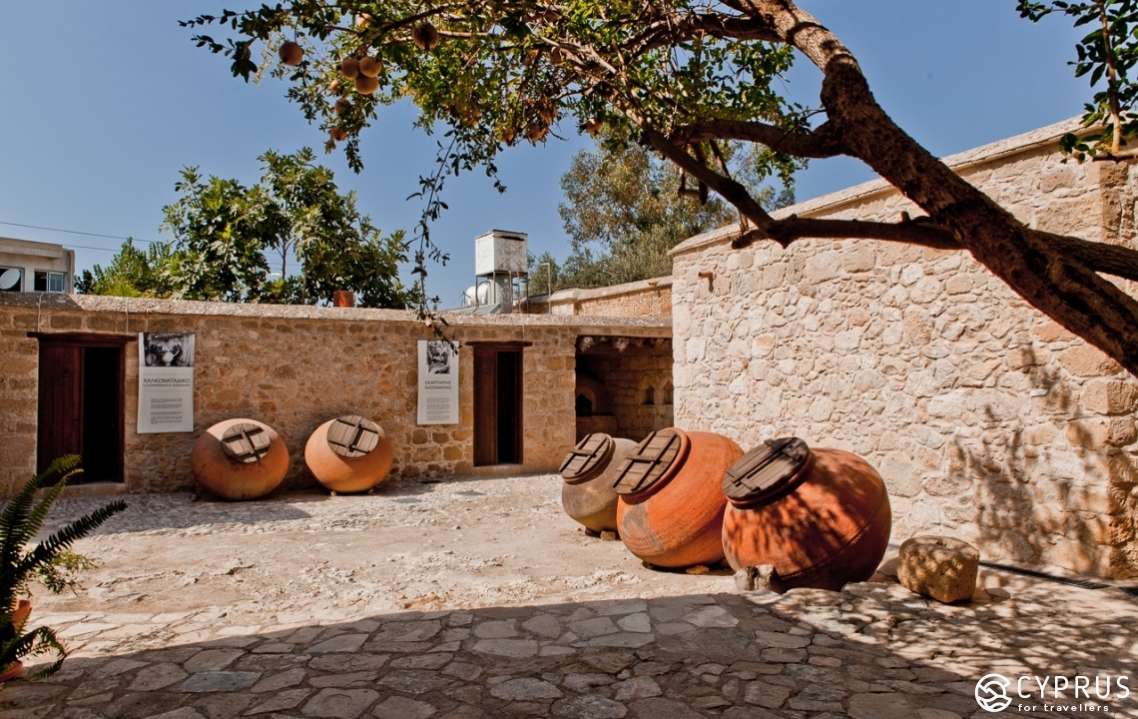
The production of a big jug took 20-45 days depending on its size. To start work, the artist would take a piece of clay weighing 3-4 kg and create the base of the jug. It would have to be big enough to support the weight of rest of the jug. That same day, he would make semi-finished parts (20-25) that would late be added to the jug. Each day, the artist would add one ring to the previous one thus creating the shape of the future jug. It was important that the new ring remains wet until the next day. Therefore, the potter would cover unfinished pots and jugs with grape or walnut leaves. When the jug was ready, it was dried for about 10-15 days.
Firing
After drying, all ceramicware had to be fired in a wood-burning kiln. Big jugs were put in a special kiln designed for 3-9 items (depending on their size) using a support base and a bag to roll them in. Pots and jugs were placed in the kiln carefully: first the large ones and then the small. It took 3 days to complete the firing. Many of the ceramicware items bear the name of the manufacturer and the date of production; sometimes even the name of the buyer was added.
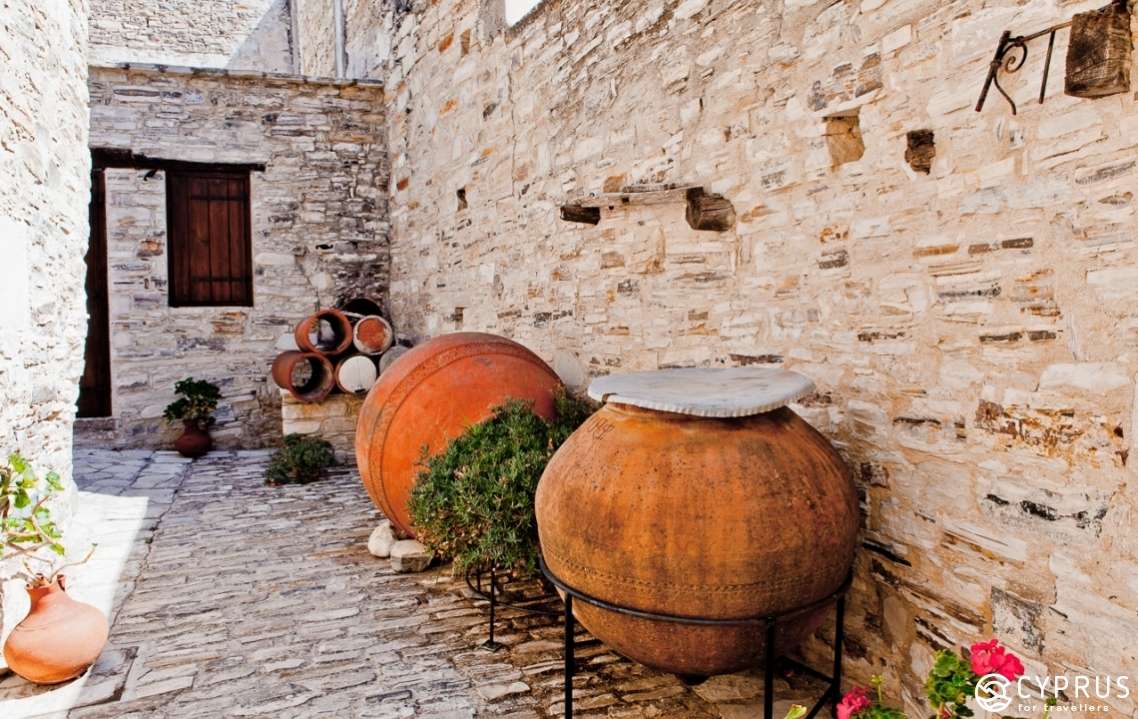
After the firing process was completed, the jugs had to be cleaned with tar and vinegar. After all, when the jugs are still hot, the pores in the main body are open so it's the ideal time to treat them to waterproof them.
The modern way of life has changed the use of pottery and ceramic utensils. As a result, there are very few women working in the pottery industry. Their market is mainly limited to decorative pots and vases.
Cyprus’ Modern-day Pottery and Ceramics Industry
The Cyprus Handicraft Centre (under the Ministry of Trade, Industry and Tourism) carries out research, and works on preserving and promoting of pottery in Cyprus in cooperation with the community, the Fini Emigres Association, and other organisations, by laying on various festivals, master classes, seminars and conferences. Young people are also encouraged to study the art of pottery (for more information, see: www.cyprusceramicassociation.com).
Ceramics are an excellent souvenir choice — they capture the soul of Cyprus…
Cyprus currently has about 40 workshops, which have worked to preserve the secrets of the craft while combining them with modern design trends in terms of pot shape and decoration. Here are a few examples: Savvas Pottery, one of the oldest and most famous pottery workshops in Cyprus. It is on the old Limassol – Paphos motorway, near Geroskipou. The founder, Savvas Georgiades worked in the ceramics industry at KERAMEYS (in the western part of Kyrenia) for 15 years, and one of his sons, Panikos Georgiades has followed in his footsteps and continues the family tradition. He studied ceramic engineering and developed his own colours and glazes. Over the past 40 years, the master potters at Savvas Pottery have developed new materials that extra resilient and stand up to modern-day usage, and created new, up-to-date designs, while remaining faithful to local traditions. The workshop offers lessons for those who want to try their hand at the craft. It also has its own online shop at: www.savvas-pottery.net.
Lemba Pottery is a workshop in the village of Lemba (also known as the Village of Artists), near Paphos. Its owner, George Georgiades is a master potter, whose father was also a potter in Lapitos before the Turkish occupation. George studied both traditional and modern techniques of working the clay and modelling ceramics. His works reflect ancient shapes with their simple elegance.
These days, Georgiades and his wife, Sotiroula, create real works of art. Their workshop is a great place to treat yourself or and pick out a gift: they have wonderful colourful glazed pots, dishes with a beautiful decorated rim, plates with a minimalistic, modern design, and much more: www.lembapottery.com.
These days, workshops export their products, mainly to Europe, but in small quantities. After all, they are not large-scale ceramic producers. As a rule, they have one or two employees. There are larger associations though.
There are modern-day Cypriot potters working in the realistic style that often take part in local and international exhibitions. They include Maria Vassiliou and Christina Constantinou; both artists are inspired by the island's natural motifs and its culture. Artists working in the more abstract and free-form sphere of ceramics include Koulla Kalvari, Andreas Kattos and some other ceramists: Their works are highly original, with bold ideas and exquisite technique. You can also find works produced by modern foreign artists in Cyprus. Their works include entire ceramic panels such as Paul Hatter’s Untitled or Sue Mifsud’s Behind the Sun.
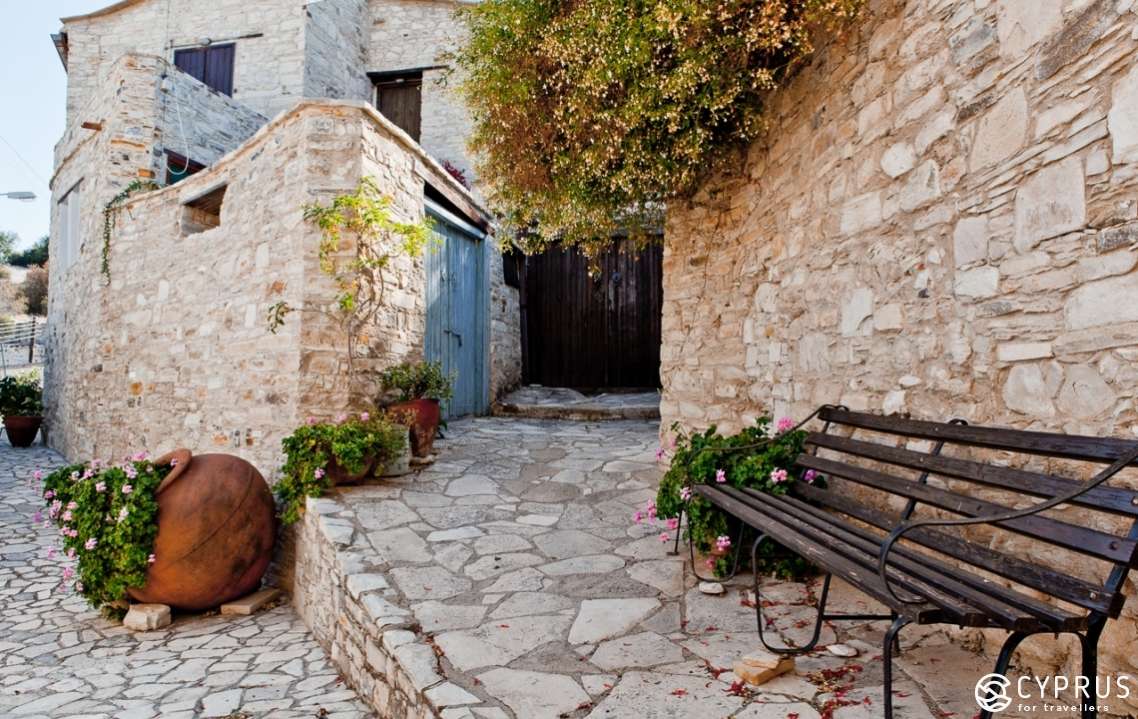
Listed below are the addresses of workshops and art salons where you can buy ceramics or learn more about the craft:
The Cyprus Handicraft Centre (Nicosia) — runs workshops and has salons that sell traditional folk art and crafts.
Address: Athalassas Avenue 186
Phone: +357 22305024
Souvenir shop at the Leventis Municipal Museum of Nicosia
This museum runs educational programs, excursions and other events. The souvenir shops stocks works produced by contemporary artists and artisans as well as literature on ceramics.
Address: Ippokratous 15-17, Nicosia
Phone: +357 22661475, Fax +357 22662285
Website: www.leventismuseum.org.cy
Souvenir shop at the Cyprus Folk Art Museum
The museum staff will not only offer you a tour of the permanent exhibition and temporary exhibitions but also answer questions about the crafts. They are well informed and knowledgeable. The shop has reasonably-priced works produced by masters working in the applied arts.
Address: Square of Archbishop Kyprianos 2, Nicosia
Phone: +357 22432578, Fax +357 22343439
Website:: www.cypriotstudies.org
The Chrysaliniotissa Arts & Craft Centre (Nicosia)
This is a complex of eight workshops near the Panagia Chrysaliniotissa church, the oldest Byzantine church in the Old City. The centre is part of the restoration and revitalization works undertaken in the capital.
Address: Dimonaktos, 2 (where Ipponaktos and Dimonaktos streets meet)
Phone: +357 22348050, +357 99629611
The Place (Old Paphos)
Local craftspeople utilise this art space for workshops where they produce their art and demonstrate their crafts and talents to visitors. Pottery is just one of the arts and crafts on display.
Address: Konstantinou Kanari 56
Telephone: +357 26101955
Email: theplace@theplacecyprus.com
Website: www.theplacecyprus.com
The Souvenir Shop at the Farm House Museum
It is in the central square of Ayia Napa (near the monastery).
Website: www.ayianapa.org.cy
Look out for our latest articles — stay tuned!
